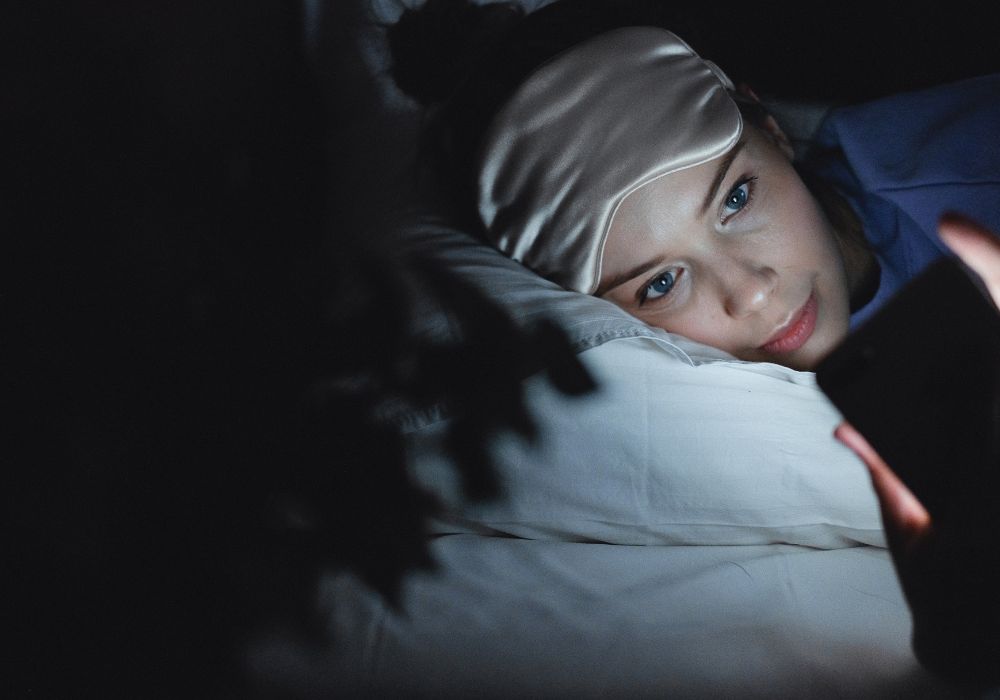Do you ever start scrolling your social media feed for a few minutes before sleep, and suddenly it’s 2 am? Well, you’re not the only one. Being digitally hooked is a key feature of today’s contemporary world, with screen time limits going totally off the charts.
Too much dependence on the Internet can lead to Internet addiction. It involves an individual excessively and uncontrollably engaging in online activities to the extent that it starts interfering with their daily life and functioning. It might involve scrolling endlessly on social media, a compulsive need to be online, and experiencing withdrawal-like symptoms when not using a device. This can take a toll on your physical health, causing headaches, weak eyesight, or even insomnia, and also on your cognitive abilities and mental skills. This is when the need to balance your screen time becomes relevant. Let’s look at how.
What Is A Digital Detox?
Have you ever promised yourself that you wouldn’t watch a lot of TV or laptop on a certain day? If yes, you already have an idea of what a digital detox is. A digital detox is like pressing the refresh button on your relationship with technology. It’s a conscious effort to take a break from the constant presence of screens and the online world. Imagine it as a vacation for your mind and soul, where you temporarily disconnect from digital devices and focus on reconnecting with the real world. During a digital detox, you intentionally limit or eliminate the use of smartphones, tablets, computers, and other electronic gadgets. The goal is to create a healthier balance between your online and offline life. It’s a chance to step away from the constant notifications, social media updates, and the addictive allure of the internet.
Giving up your screen time entirely might not be very practical. While you might take an oath to be inactive or offline, the rest of the world still isn’t. So instead of missing out completely on everything that is digitally accessible, digital detox refers to the sustainable use of screens to promote a healthy and more balanced lifestyle. It’s not an indefinite break with technology altogether; it simply allows you to control your digital usage rather than screens controlling you.
Signs That You Might Need A Digital Detox
Can you recall the last time when you voluntarily refrained from using your phone or laptop for an extended period? If you have trouble recalling the answer to this, it looks like you need to reprioritize your usage of digital devices. Ask yourself:
- Are you constantly anxious that you might miss an important update if you’re not on the internet?
- Do you have a compulsive need to check every notification you hear?
- Does your screen time interfere with work, studies, household chores, or personal relationships?
- Do you find yourself consistently choosing online interactions over face-to-face interactions with family, friends, or colleagues?
- Do you experience physical symptoms like eye strain, headaches, neck or back pain, or poor posture due to excessive screen time?
If you resonate with one or more of these signs, it’s a good indication that a digital detox could be beneficial for you. A digital detox can create a healthier balance and ensure that digital devices serve as tools to enhance your life rather than dominate it. Some of these benefits are:
- Improved mental well-being.
- Increased productivity and creativity.
- Better sleep quality.
- Stronger real-life connections.
- Quality time with yourself.
- Opportunity to revisit old hobbies
- Greater mindfulness.
- Enhanced physical health.
Ways To Balance Your Screen Time
Taking a step back from technology and establishing healthier boundaries can enhance your overall quality of life. Here are some easy steps you can take in that direction:
1. Reflect And Evaluate: Look back on how you spend your time on devices and gain a better understanding of your digital habits. Gain awareness of your thoughts while you’re using your phone or binge-watching content, and reflect by asking yourself why you are spending excessive time online or if you are becoming overly dependent on these devices. Recalling your digital usage might help identify the impact these activities have on your life, how they make you feel, and what exactly needs to be done.
2. Work As A Team: If you find people near you also having a hard time limiting their screen time, you could work on it collectively. Make goals to balance your screen activity and remind and encourage each other for the same. This can help you control your screen time by increasing the pressure to conform and increasing your motivation as a result of support.
3. Technology To The Rescue: As ironic as it might seem, sometimes the best way to win against technology is through the use of technology. Some ways this can be done are:
- Intentional use: Be mindful of your purpose while being on the screen.
- Track usage: Many smartphones and PCs have features to help you track app-wise usage and also allow you to set time limits. Take advantage of these settings to enforce boundaries on your screen time.
- Notifications and Do Not Disturb Mode: Turn off distracting notifications and activate the Do Not Disturb mode on your devices during specific hours or when you want uninterrupted personal time.
- Set device-free zones or times: Designate specific areas in your home, such as the dining area or bedroom, as device-free zones where you can spend quality time with your family.
4. Explore Alternatives: You might be more mindful of other interesting things when you’re not lost in screens. Rediscover analog activities like writing in a journal, drawing, playing board games, or listening to music on vinyl records. This might be a good time to visit the activities you used to enjoy earlier, such as reading books, pursuing hobbies, engaging in physical exercise, or spending time in nature.
5. Be Patient: Sometimes, the stress due to digital usage might want you to unplug completely. However, set realistic goals and take a step-wise approach to find your balance. If you find it very difficult to limit your screen time, you might want to start with limiting one device at a time, once a week. Find ways that work for you.
Remember, the goal of a digital detox is to find a healthier balance between your online and offline life, so feel free to tailor these suggestions to suit your personal preferences and needs.





